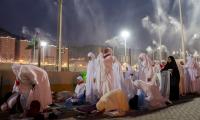In our previous article in these pages, ‘Development as transformation’ (May 10, 2018), we had outlined the conceptual framework for the idea of development as transformation. This involves ‘putting people first’ in designing a development policy and measuring progress. In this article, we will propose five key policy initiatives that could trigger a process of transformative development to make a break from the past.
The fundamental factor in underdevelopment is an economy that works for the rich and powerful rather than the poor and powerless. So, our transformative actions seek to change the rent-based institutional structure to one that is based on providing an equality of opportunity to all citizens, laying the basis of sustained long-term economic growth.
Our first proposed initiative is to construct a new social contract by 2025 to achieve social transformation. There is much evidence to show that social policies can be as important as economic policies – if not more so – in attaining a prosperous society and sustained high growth rates.
So, the question is: how do we go about with this challenge in Pakistan? In our first article, we presented the case for securing the universal provision of social services. We now propose that the commitment to this goal should be made in the first 60 days of the new government, with a detailed action plan to achieve such a goal by 2025. This means that each and every citizen of the country will by that time have access to health, education and social insurance as a basic right. It will provide a significant opportunity to redefine the basic relationship between Pakistani citizens and the state.
Equity concerns have to be built into the very design of such an action plan. Rich provinces and cities shouldn’t necessarily have more money to spend per child or per patient than poor ones. Some thoughts on the shape of such a policy framework for health and education may be of value. Social security needs an entirely new design since very little of it exists in Pakistan for those outside government institutions and large companies.
The health system in Pakistan is dysfunctional and broken. Life expectancy in Pakistan is among the lowest while the infant mortality rate is among the highest in the world. Women suffer the most from such a perilous state of affairs. There is little public investment and over 70 percent of the people pay from their own pocket for uneven and often poor medical services. Incremental change cannot meet the health aspirations of the 200 million people.
Two principles could guide the revamping of the health system. First, we must prioritise prevention over cure; invest in water supply and sanitation to sharply reduce the incidence of disease; and establish strong government regulatory systems in collaboration with community-based organisations (CBOs) at the village and mohalla level that can guarantee basic food quality and healthy lifestyles.
Second, we should create a new basic healthcare infrastructure, with each outlet or BHU covering approximately a 1,000-person community that will also act as a referral system for specialised care in district hospitals (which needs a complete reorganisation as well). This infrastructure could be organised in a new way: independently run and accountable to the key stakeholders, including the government, the community and patients.
The exact model may vary according to the local context. But it would require setting up incentives to deliver on the community-level health outcomes. This is a large undertaking that requires a network of over 200,000 such BHUs. However, it could place basic healthcare within easy reach of every citizen and in the process create over 1.5 to two million new jobs.
"For the universal provision of school education, we should make education compulsory from nursery to nine years in Pakistan." China and South Korea did this, and Pakistan can do the same. This would include measures like paying the poor to send their children to school. Enlarging the present income support programme and making it more conditional may also help. Penalties must exist for everyone whose child is not in school.
Remarkably, South Korea managed to create a large literate, educated population in one generation that, in turn, allowed its economic miracle to work. Pakistan should ambitiously aim for the same, given that half of our population is less than 25 years of age.
It is regrettable that public education is underperforming. Few support it. Many argue that the system is corrupt and doesn’t produce the desired learning outcomes. But without a well-funded, well-functioning public school system, few countries have made the transition towards a developed economy, with an empowered citizenry sans large inequalities.
The second set of policy actions are aimed at economic transformation. The basic idea of the proposed actions here is one of impacting as large a number of people as possible and making those lives inherently more productive. Three policy thrusts can be highlighted:
First, eliminate poverty by 2035. According to the UNDP estimate in terms of the multidimensional poverty index, about 39 percent of the population is below the poverty line. There is a sizeable percent of the population just above that line. Indignity, shame, hunger and disempowerment are the features of the poor. No decent society should accept this. China has lifted over half of its population out of poverty in a few decades. It can be done, and Pakistan should gear itself up for that purpose.
Second, shift away from the elite farmer growth strategy of the last six decades to agricultural growth led by farmers with small-t0-medium-sized holdings (less than 25 acres). This category constitutes 92 percent of the total number of farmers and over 60 percent of the total farm area. Farmers with small-and-medium-sized holdings also have a much larger potential for yield increase than large farmers.
The idea is to provide land for the landless through the distribution of the existing over three million acres of state-owned land to such farmers and new, independent social enterprises to provide technical and financial help. This would include laser levelling and drip irrigation for better water use efficiency; soil testing for appropriate chemical nutrients; tunnel farming to grow high-value off season vegetables; and finally new app-based technologies to provide farming advice. Such a strategy would not only enable a much higher rate of agricultural growth and increased exports, but would also build equity into the agricultural growth process.
Deserts can be transformed with the right help and yields doubled, even quadrupled. After all, western Punjab yields are a fraction of eastern Punjab yields despite having a similar quality of land. The recent UNDP (Pakistan) Report, ‘Inclusive and Sustainable Development: Analytical Basis and Policy Framework’, elaborates on a policy framework to transform agriculture through such a small farmer growth strategy.
Third, we must establish an industrial policy to unleash the creative energies of the SME entrepreneurs by enabling small-scale industries in the high value-added sectors such as export-oriented automotive parts, electronics, moulds, dyes and software sectors – especially along the CPEC route.
Contrary to the neo-liberal view, in almost all the countries that have pulled themselves out of underdevelopment and achieved a dramatic improvement in the material conditions of the lives of their people, the role of the state has been decisive. Therefore, the final proposal is to restructure the bureaucracy so that it is driven by development outcomes and their change missions.
If a province or tehsil does well, their leaders get promoted. If a tehsil, district or province is lagging behind, we must send in the best people. Set human development targets at the tehsil level. Let them guide budget allocations. And keep train people. Continuous learning is the hallmark of a modern organisation. We could go further. As outcomes are data-dependent and data-driven, civil society organisations could be co-opted to become transparent monitors of progress.
The strategic aim of this five-pronged policy initiative is to create the institutional and structural basis to unleash the great human potential for innovation and productivity increase to transform Pakistan into an equitable society and dynamic economy.
Dr Khalid Malik is the former
director of the UNDP HumanDevelopment Report Office.
Dr Akmal Hussain is dean of the School of Social Sciences andHumanities at ITU Lahore.
Contributions of countless other women go unnoticed and unacknowledged year after year
Joyous gatherings, poetic expressions, and cultural rituals that revolved around water are now echoes of distant past
Most lawyers expect massive backlash within Supreme Court, reaction was far more muted than anticipated
Government is determined to unleash full power of Reformistan’s economy and pave way for unprecedented growth,...
We might begin, as Changchun-of-old did, by stating obvious: what is, does not work
Country is deeply divided, and this fragmentation cannot be addressed through symbolic actions or occasional...







